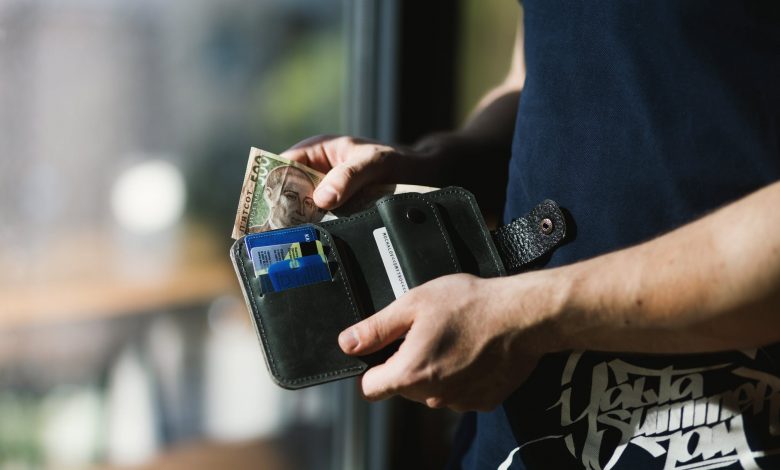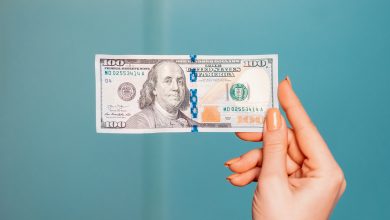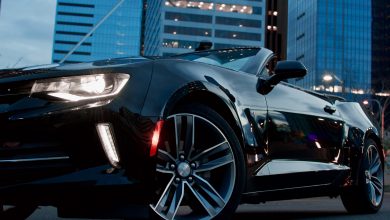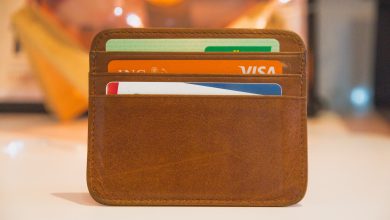Cash or Credit?: How to Keep Your Spending in Line with Your Budget

The only way to achieve your financial goals is to have a good budget and stick to it. There are various tools and techniques to create a killer budget. You can choose a simple paper or spreadsheet-based method or go up a level with a budgeting app or software program. Once you have the budget in place, an important next step is to monitor how you spend money and what factors are most likely to trip you up. Which payment type is best if you are trying to stick to a budget? This is an important question to answer for yourself because how you make payments has a great impact on how much you spend.
Why Payment Type Matters
The easier it is for you to spend money, the more you are going to spend. A lot of people get into debt by spending more than they earn. One of the key places this can happen is through store credit accounts. Before you know it, you might have a closet full of clothes you haven’t yet worn, while your store credit and interest charges are spiraling out of control.
If you have ever walked out of a store with way more groceries or shopping than you planned to buy, you are not alone. According to the psychology of spending, there are a few psychological reasons why people spend more money than they ought to. Knowing these can help you nip bad habits in the bud and achieve your budget objectives.

Understand Your Spending Behavior
Here are some of the ways your mindset impacts how much you spend. The driving force may be internally or externally powered:
- Retail therapy: There’s no doubt about it – buying something nice for yourself can soothe your hurt emotions, whether you are going through a break-up, are in the midst of conflict at work, or are in the middle of other life challenges. Spending money on fine things is therapeutic, and there’s nothing wrong with pampering yourself. The problem comes when you don’t keep this habit in check, and you spend more than you can afford to. It may be time to find other ways to relieve stress without spending money.
- Competition and comparison: Comparing yourself to other people can often be a recipe for disaster. We want what others have, and we want to enjoy the lifestyle they enjoy. With social media, it’s easy to feel you are missing out. Moderation is required so that you are spending what you can afford and aren’t motivated by a need to live up to other people’s standards.
- Impulse buying and advertising: Commercials and adverts are designed to trigger desire in us. If you don’t take care, you could find yourself buying a lot of stuff on impulse. If a big red sale sign automatically triggers a massive shopping spree, you might need to take a step back.
Knowing how you spend, your internal triggers, and your general money mindset can help you make better decisions about your spending. Sometimes the changes you need to make are as simple as allocating fun money or making fewer trips to the mall or the grocery store. Planning ahead and having a ready response for your spending triggers can save you from debt and guilt later on. You might find that your current spending method is making it a little too easy for you to be extravagant with your money and money that isn’t yours.
The Dangers of Credit
Without credit cards, credit accounts, and debt, everything has to be paid for in cash. While this can work for groceries and small appliances, it’s a different case altogether for larger purchases, such as cars and homes. There are established codes and standards as far as credit scores, loan terms, interest, and mortgages. All these allow you to borrow money you don’t have and pay it back over time. The better your credit score, the more you can borrow. You can improve your credit score when you demonstrate that you have a history of paying off debt on time. In this way, having some debt is a good thing because it gives you access to better credit lines.
The challenge with debt comes when you don’t manage how much of it you accumulate. Some credit cards are harder to get, but there are many places when it’s easy to get an extra credit card. If you aren’t careful, you could end up with a dozen different credit cards. This means more money to spend – money that you don’t actually have.
Credit card debt is a major challenge for many people, and it can take years to clear up. Late payments incur a high-interest fee, so this is something to watch out for. It’s handy to have a credit card within reach in emergencies, but when it comes to ordinary spending, there’s a fine line to walk. Credit cards can make it a little too easy to spend. For many people, this extra money isn’t budgeted for because it can feel like additional income. You haven’t worked for it yet, but you get to spend it. If you have too many credit cards and find it very tempting to overspend, it may be time to put them away and look into developing different spending habits.

The Case for a Cash-Only Budget
If you are struggling to contain your spending, it could be time to look into a cash-only budget. There are various forms of this, depending on how strict you need to be. You can decide to put aside all your credit cards and credit accounts and only pay for the things you buy using your debit card or hard cash. This is a great change to make because it forces you to think twice about whether you really can afford all the things you might have been tempted to get with a credit card. Many people have gone to the extent of closing their credit cards once paid off and cutting them up. This could be the line in the sand you might need to draw as well.
Another popular form of a cash-only budget involves only using physical cash to make payments. You need to shelve both your credit and debit cards if you are willing to give this a try. The reason why this spending method is largely hailed as a way to cut back on spending has to do with the emotional and psychological experience of spending money. Swiping a card, be it a credit or debit card, is easy to do. It’s seamless and painless, in a sense. When you pay for your groceries using physical cash, however, you experience spending in a completely different way. You must count up your hard-earned cash and hand it over to someone. You see its volume for larger purchases, and as a result, this makes it more difficult to do than simply swiping a card.
One popular way to manage a cash-only spending method is by using an envelope budgeting system. In this method, you use different labeled envelopes for each of the different categories in your budget. When it’s time to spend money on gas, you can only take cash out of the gas envelope and the same for other categories, such as clothing, groceries, utilities, and so on. Once the money allocated to a particular envelope is depleted, that’s it for that month. Envelope budgeting isn’t the easiest to do, but it does build discipline and restraint.
Besides all the benefits of a cash-only budget that have already been mentioned, here are a few more.
- Spending cash makes you more conscious of what you are spending. You can visually see where your money is going, and you may need to allocate more or less in one area than you previously thought.
- Cash only makes you think twice about every purchase for psychological reasons. Various studies support this. Cash-only budgets have proven effective in curbing a lot of impulse spending.
- Having some cash on hand is always a good idea, but in the age of electronic money, many people never do. Some situations where hard cash comes in hand include when you need to make a payment where there are no card facilities or conveniently located ATMs and banks, when you want to tip in cash, and when there is no network signal.
- When you use cash, there is a limit on how much you can spend because the chances are high that you are only going to carry a limited amount with you. This could be what you think you might use that day and a little extra for emergencies. With a credit or debit card, there’s so much more available.
- Using cash helps you cut back on how much debt you accumulate.
As good as a cash-only budget is, it does have a few restrictions. For large payments, it may not be possible, practical, or safe to withdraw large sums of money. For recurring payments, such as your mortgage, loan, and car payments, you are better off sticking to your debit order arrangement. Finally, a cash budget has quite a lot of administration attached to it. You must be careful not to mix up envelopes, take from the right envelope each time, and keep track of what’s left in each of them.
Society is evolving towards a completely cashless system. There are lots of perks to this, and for every problem or bad habit you have, there’s probably an app that can help you address it. It might not be easy to go completely cardless, but it is definitely worth giving it a shot. Even if you can’t keep it up for a long time, just trying it out for a month can teach you some invaluable lessons about yourself, your spending, and your relationship with money.
You might have found yourself asking, “Which payment type is best if you are trying to stick to a budget?” It’s a valid question because there is evidence to suggest that spending cash helps you spend less than if you were swiping a credit or debit card. There is, however, a lot more to keeping your budget than your payment method. To spend less and stick to your budget better, the key is to create a practical budget, understand your spending triggers, and make the necessary changes.



